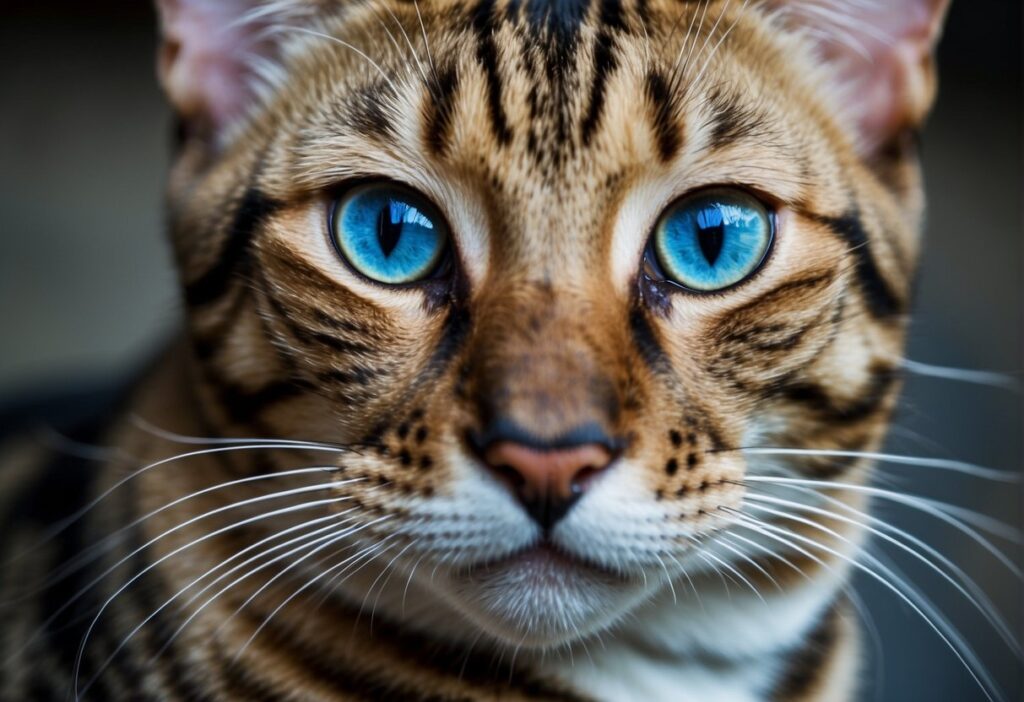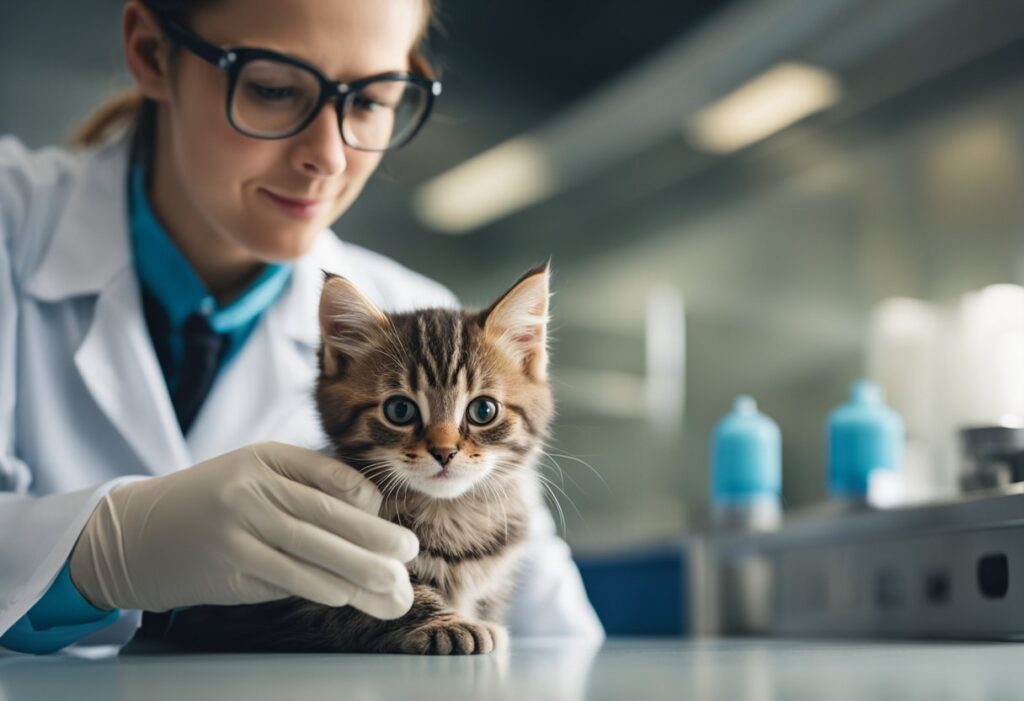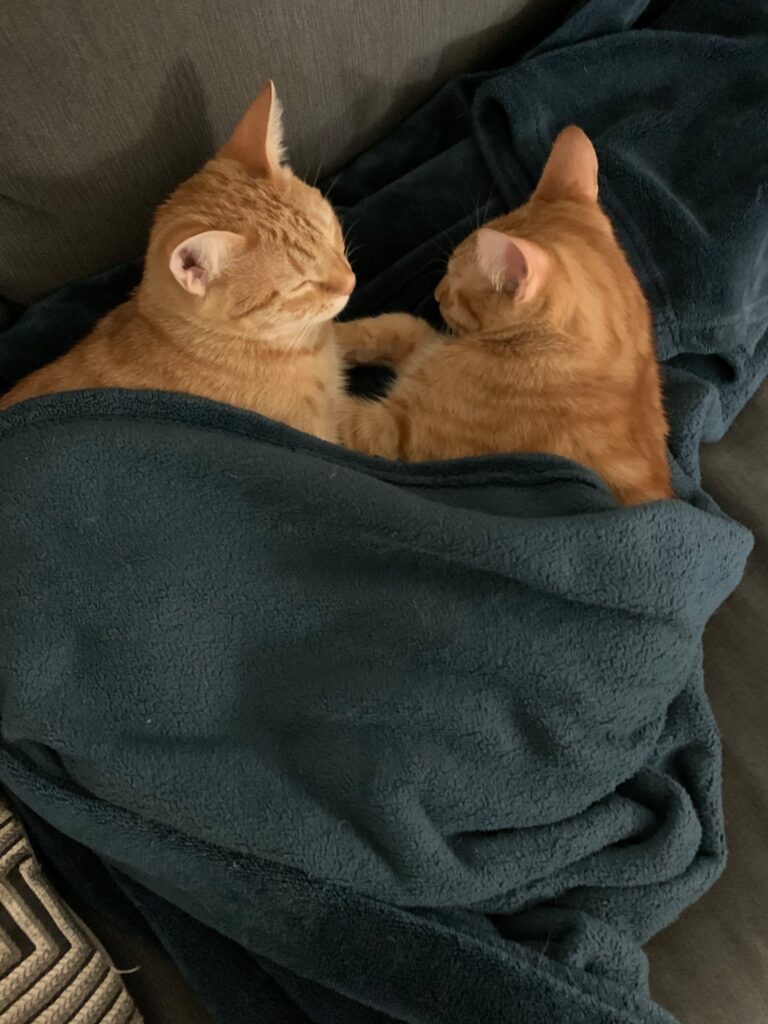Bengal cats can have blue eyes but not all Bengal cats have blue eyes.
In this section, I will discuss the different eye color variations in Bengal cats.
Common Eye Colors in Bengal Cats

Bengal cats are known for their striking and unique appearance, which includes their eye color. The most common eye colors in Bengal cats are green, gold, and brown.
These colors are dominant genes that are inherited from the non-Bengal domestic cat introduced into breeding lines.
Genetic Influence on Eye Color
The eye color of a Bengal cat is determined by genetics. The recessive gene for blue eyes is present in some Bengal cats, and when two cats with the recessive gene breed, there is a chance that their offspring will have blue eyes.
Blue Eyes in Bengal Cats
Blue eyes in Bengal cats are relatively rare, and they are often highly sought after by breeders and cat enthusiasts due to their unique appearance.
Blue eyes in Bengal cats can vary in shade, ranging from a light, icy blue to a deeper, more intense blue hue. These special Bengal eyes are specific to the “Snow” variety of Bengal coat color.
Factors Affecting Eye Color Change
The eye color of a Bengal cat can change with age and lighting. Kittens are born with blue eyes, which can change to their permanent color as they grow older.
Lighting can also affect the appearance of a cat’s eye color.
Health Considerations Linked to Eye Color

Bengal cats with blue eyes, particularly those with seal lynx point or snow Bengal coat patterns, may be at a higher risk for certain health issues, such as cataracts and progressive retinal atrophy.
Can Snow Bengal cats have blue eyes?
Yes, Snow Bengal cats can have blue eyes. Snow Bengals are a type of Bengal cat that come in three color variations: Seal Lynx Point, Seal Mink, and Seal Sepia.
These colors are the result of a recessive gene that affects the production of melanin, the pigment that gives color to the fur and eyes of cats. As a result, Snow Bengal cats can have blue eyes, green eyes or gold eyes.
How can you identify a Bengal cat from other breeds?
Bengal cats have a unique appearance that sets them apart from other breeds. They are medium to large-sized cats with muscular bodies and a wild-looking coat pattern.
Bengal cats have a distinctive “M” shape on their forehead, and their fur is soft and silky to the touch. Bengal cats also have a playful and energetic personality, and they are known for their love of water.
Are blue-eyed Bengal cats more expensive?
No, blue-eyed Bengal cats are not more expensive than other Bengal cats.
The price of a Bengal cat depends on various factors, such as their age, gender, pedigree, and coat quality.
While blue eyes can be a desirable trait in Bengal cats, it does not affect their price.
The most important thing when choosing a Bengal cat is to find a reputable breeder who prioritizes the health and well-being of their cats.


